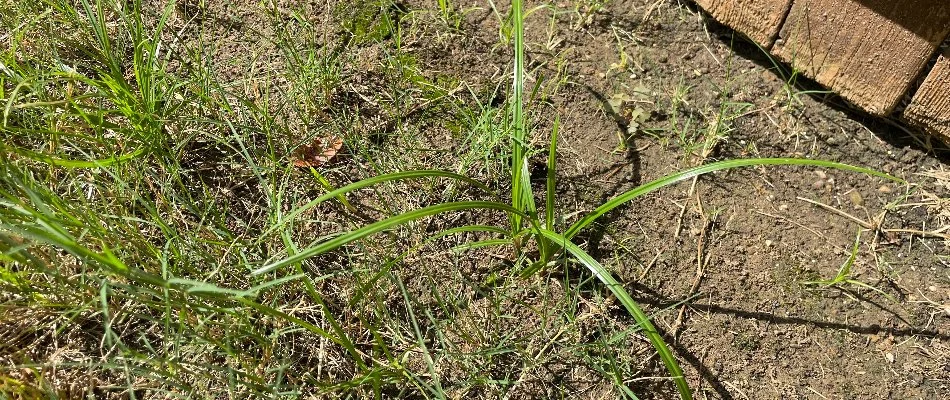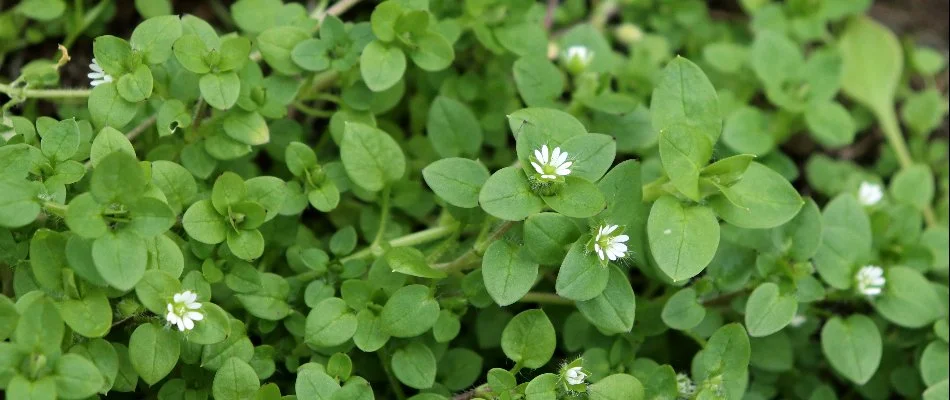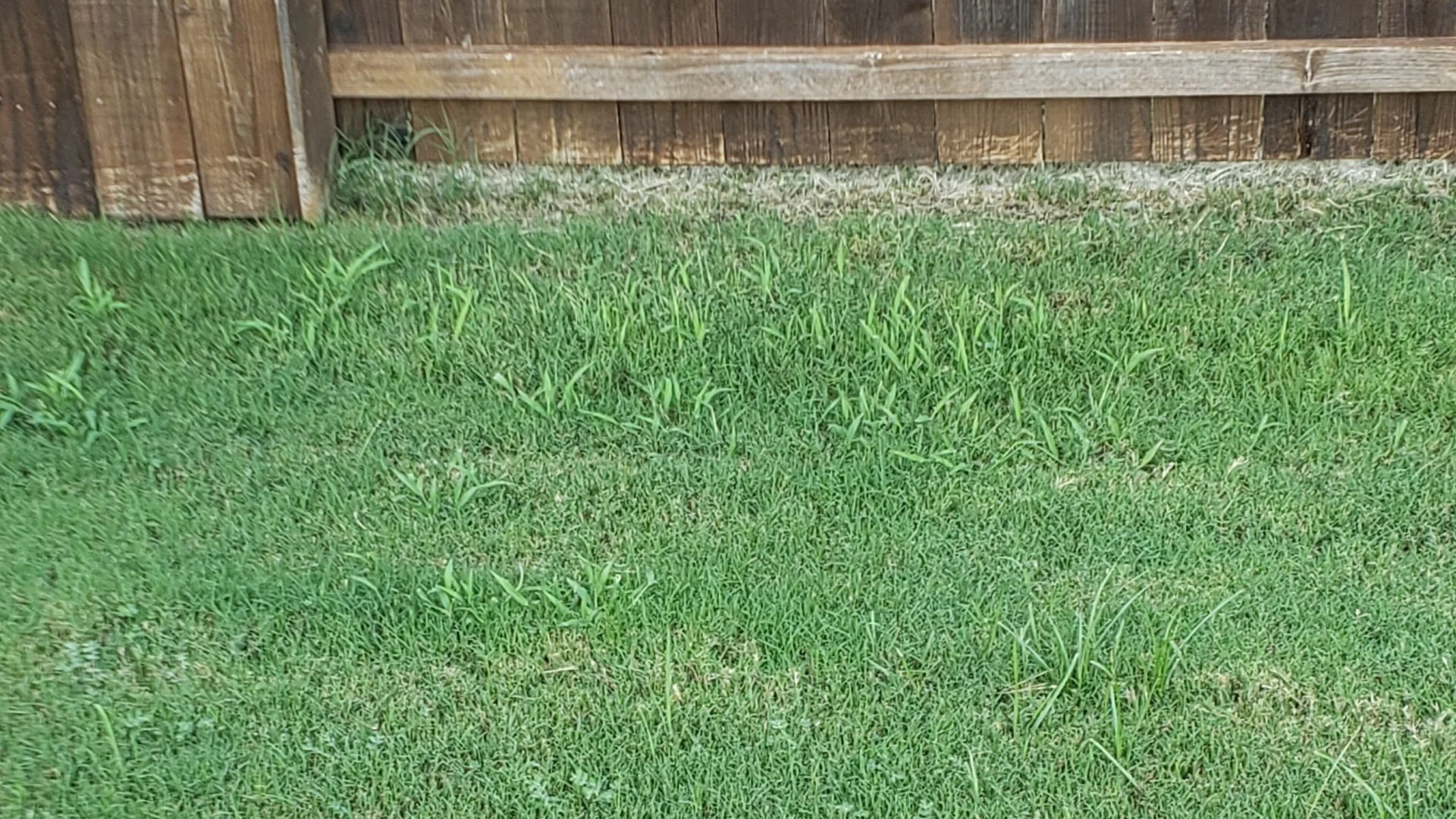Weeds tend to be a big problem for homeowners here in Texas. These pesky plants can drag down the appearance of your property and steal nutrients and other important resources from your grass. Two types of weeds that commonly infest lawns in our area are grassy weeds and broadleaf weeds. Grassy weeds are weeds that look like grass, with their narrow leaves and rounded or flattened stems. Meanwhile, broadleaf weeds have wider and broader leaves that grow in different directions. If your lawn is infested with grassy weeds, broadleaf weeds, or both, you'll want to sign up for a professional weed control program to make these nutrient-stealing plants a problem of the past!
What are grassy weeds?

Grassy weeds are invasive plants that resemble grass with their narrow leaves and rounded or flattened stems. Because of their similar appearance to grass, it's easy to miss their presence on your lawn, giving them a better chance of going undetected and taking over your turf. Grassy weeds are also monocots, which means one seed grows a single leaf. Examples of grassy weeds that are commonly found in lawns include dallisgrass, nutsedge, and quackgrass.
What are broadleaf weeds?

Broadleaf weeds are pesky weeds with wide and broad, flat leaves that grow in different directions. Their stems are also tall, slender, and solid, compared to grass which has hollow stems. The leaves of broadleaf weeds also have a main vein at the center that branches out into smaller veins on either side. They also have fibrous roots, with some having one large single taproot while others have a wide system of thin roots.
Unlike grassy weeds which are monocots, broadleaf weeds are dicots, which means there are paired leaves within the seed. Broadleaf weeds are easier to identify compared to grassy weeds because they stand out distinctly against your lawn. Chickweed, henbit, and purple deadnettle are common examples of broadleaf weeds.
What's the best way to control grassy and broadleaf weeds on your lawn?
Weeds, whether grassy or broadleaf, are tough to control because they are not picky with the conditions they live in so they can tolerate different environments. To help keep your lawn free of both types of weeds, you'll want to sign up for a professional weed control program. When you do, professionals will often utilize both pre- and post-emergent weed control treatments to keep your lawn free of weeds.
Pre-emergent treatments keep newly germinated weeds from emerging on your lawn, while post-emergent treatments target existing weeds. Lawn care professionals will apply these treatments several times throughout the year to provide consistent defense against invasive grassy and broadleaf weeds. Both these weed types are persistent, and continuous weed control applications will allow you to stay on top of any weeds that emerge on your turf.
Give us a call today to sign up for our weed control service!
Keeping your lawn free of weeds requires consistent weed control applications, and we are experts at tackling weed growth! Our team at Weedex Lawn Care offers our weed control service to residential properties in Dallas, Fort Worth, Arlington, TX, and throughout the surrounding areas. When you sign up for this service, we will visit your property multiple times throughout the year to administer pre- and post-emergent weed control treatments. Our weed control treatments can get rid of various pesky weeds, but we also offer dallisgrass and nutsedge control treatments as add-ons to eliminate these invasive weeds on your turf. Give us a call today at (972) 727-9207 to sign up for our weed control service.



Comments (0)
Thanks for your comment!
Thanks for your feedback! Your comments have been successfully submitted! Please note, all comments require admin approval prior to display.
Error submitting comment!
There is a problem with your comment, please see below and try again.